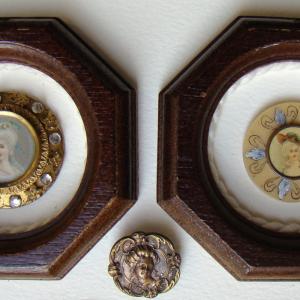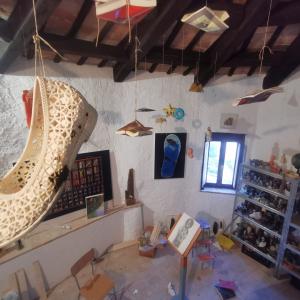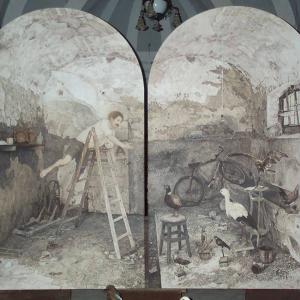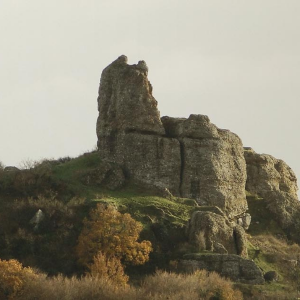First stop Famous buttons
This trip begins in Santarcangelo, an ancient medieval town on the Via Emilia, just a few kilometres from Rimini and the beach. The town of the master Tonino Guerra, of the tufaceous-caves, of the slow holiday, of the craft-printing, of culture and museums.
Here is an unusual and original museum. It is the Button Museum, which houses more than 14,000 specimens from 58 countries. Small objects that tell four centuries of history, fashion and costume.
From the buttons of the Popes to those designed by Picasso for Coco Chanel, to the space buttons donated by the astronauts Cristoforetti and Parmitano — a journey through time and style that surprises and fascinates.
Second stop Pennabilli between poetry and nature
The route continues towards the upper Marecchia Valley, amidst the green landscapes of the Sasso Simone and Simoncello Natural Park, up to Pennabilli, the village loved and celebrated by Tonino Guerra with “I Luoghi dell’anima”.
Where art, spirituality and nature come together in an experience that touches the heart.
The atmospheric Chiesetta dei Caduti houses what Guerra called “the world's smallest museum” a single work, L’Angelo coi baffi by painter Luigi Poiaghi, inspired by a poem by the master.
The painting tells the story of an angel “who was incapable of doing anything” but who manages to accomplish the impossible: to make stuffed birds fly and initiate a series of magical events.
Third stop Montefiore Conca
The last stop is the Montefiore Conca, which rises elegantly between the hills of the Valconca, one of the most beautiful villages in Italy.
His imposing Rocca Malatestiana dominates the landscape and hosts the permanent exhibition Under the Tables of the Malatesta, born from the archaeological research conducted inside it between 2006 and 2008: the first museum in the province of Rimini built entirely with artefacts found on site.
Through mugs, cups and carefully reconstructed scenes of mediaeval life, Montefiore offers an exciting journey into the history and elegance of the Malatesta Seignory.
Tips for true professionals
- In Santarcangelo di Romagna, walk along the flower-filled and well-kept lanes of the historic centre.
- In Pennabilli, climb up to the evocative Campana di Lasha: the breathtaking panorama over the Marecchia Valley is a place that invites silence and contemplation.
- At Montefiore Conca, follow the outline of the ancient Malatesta walls: a short and regenerating walk.



